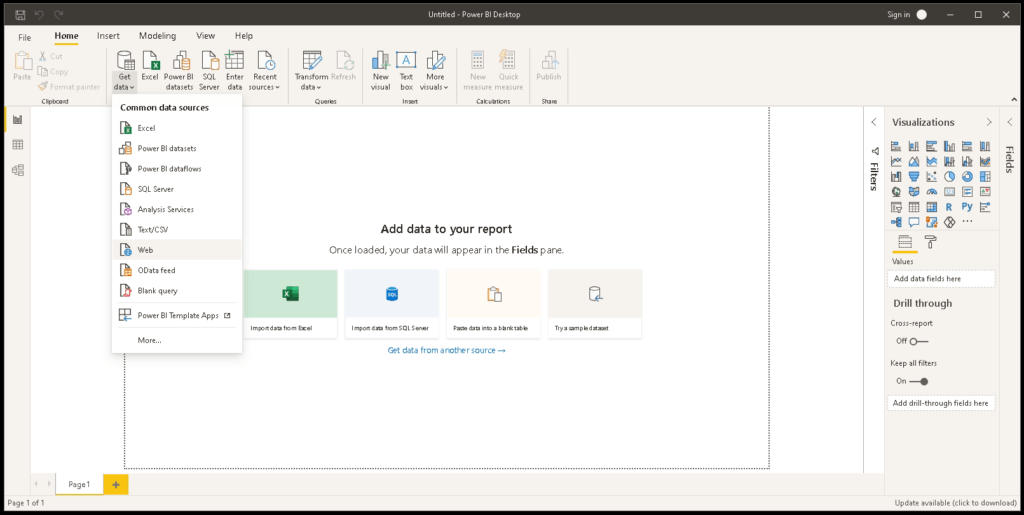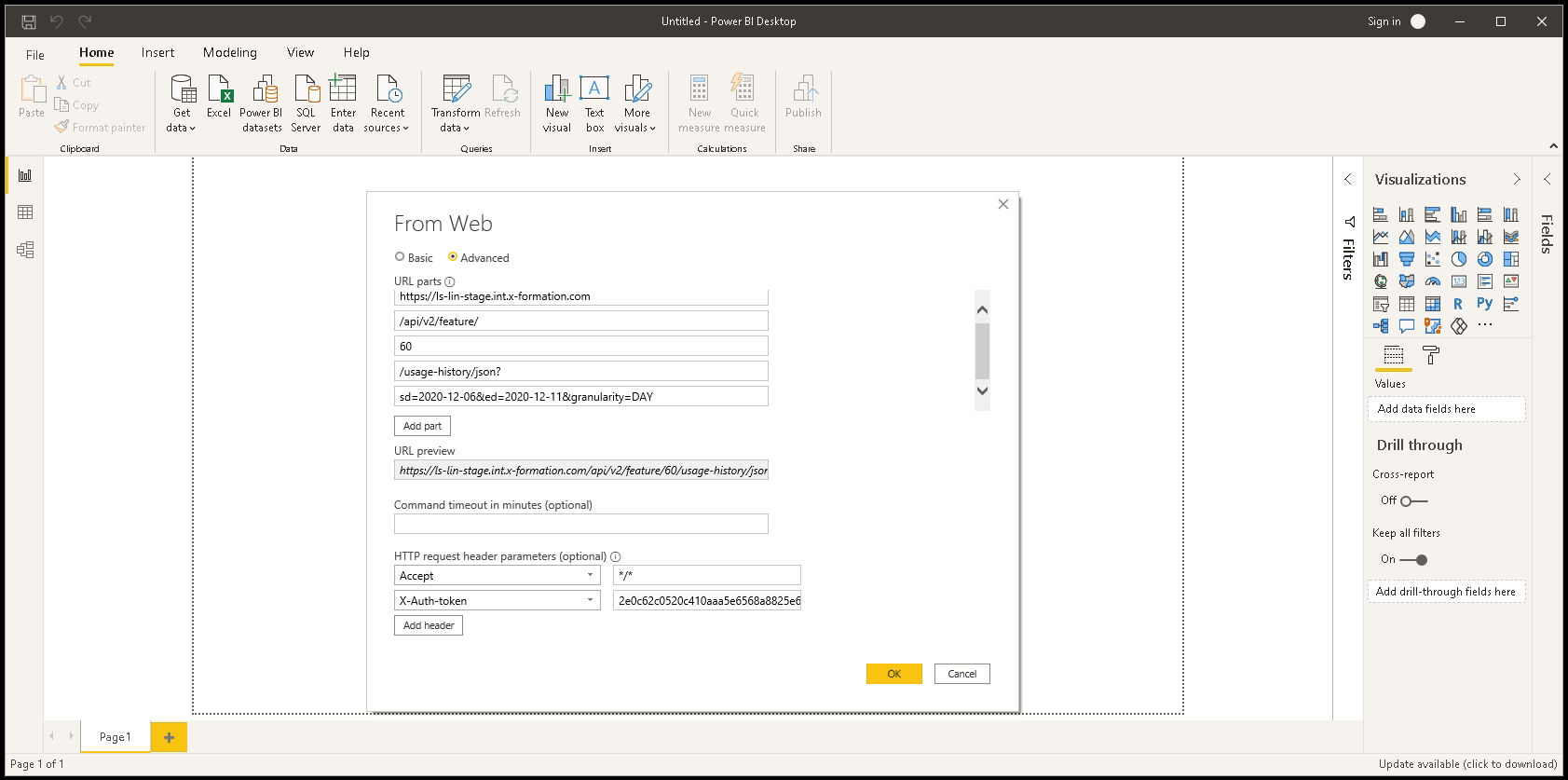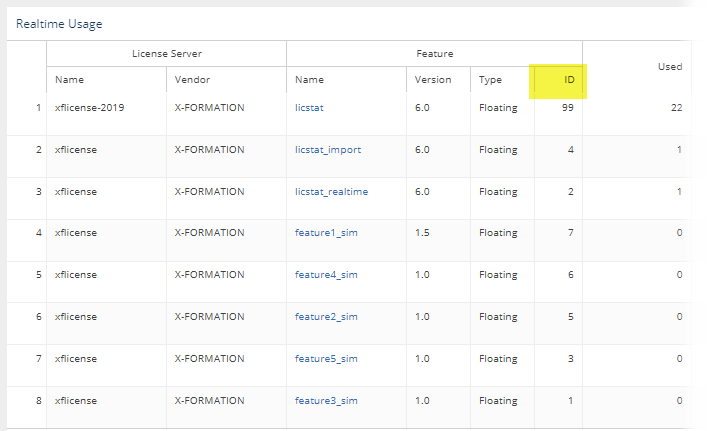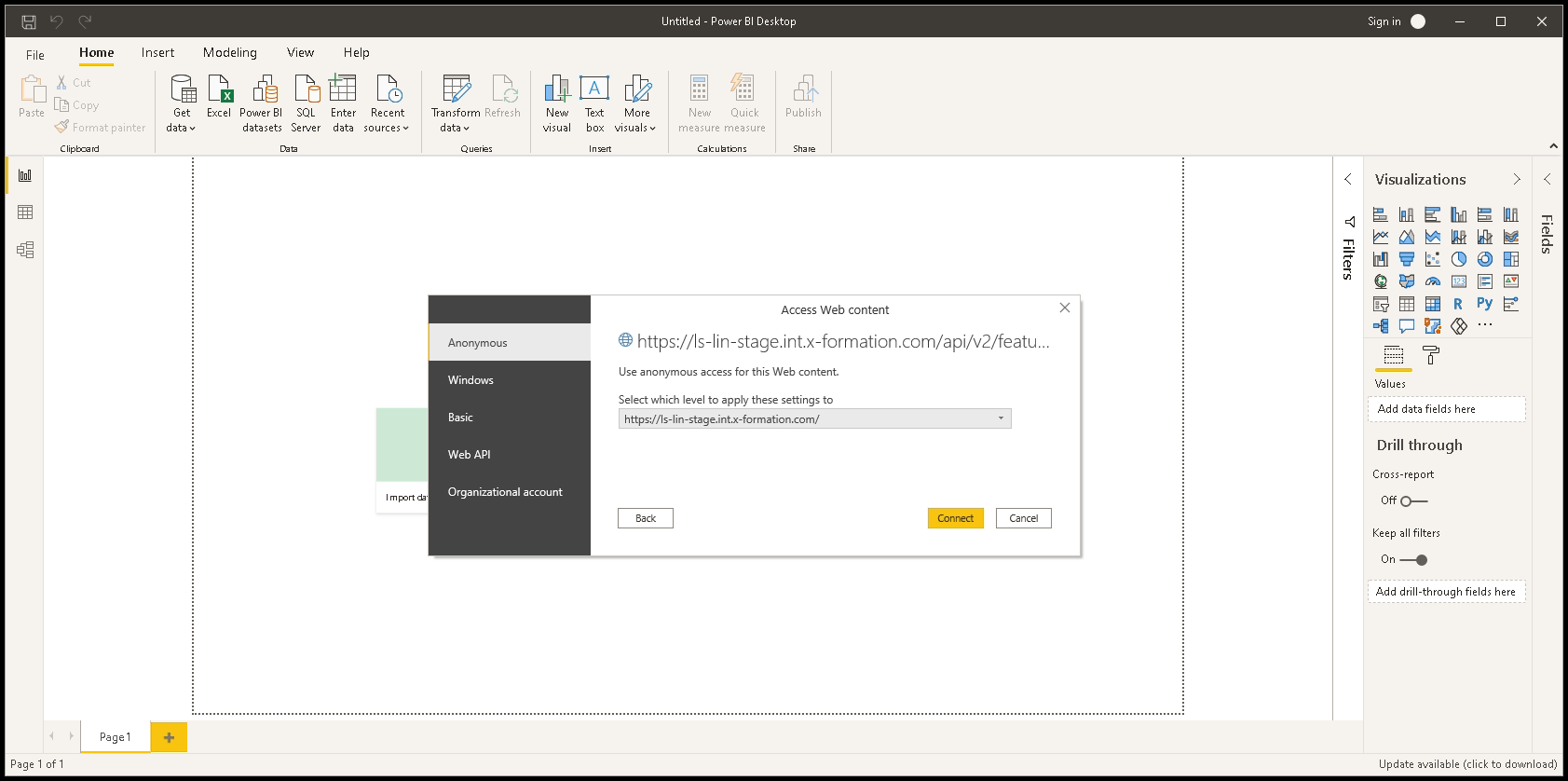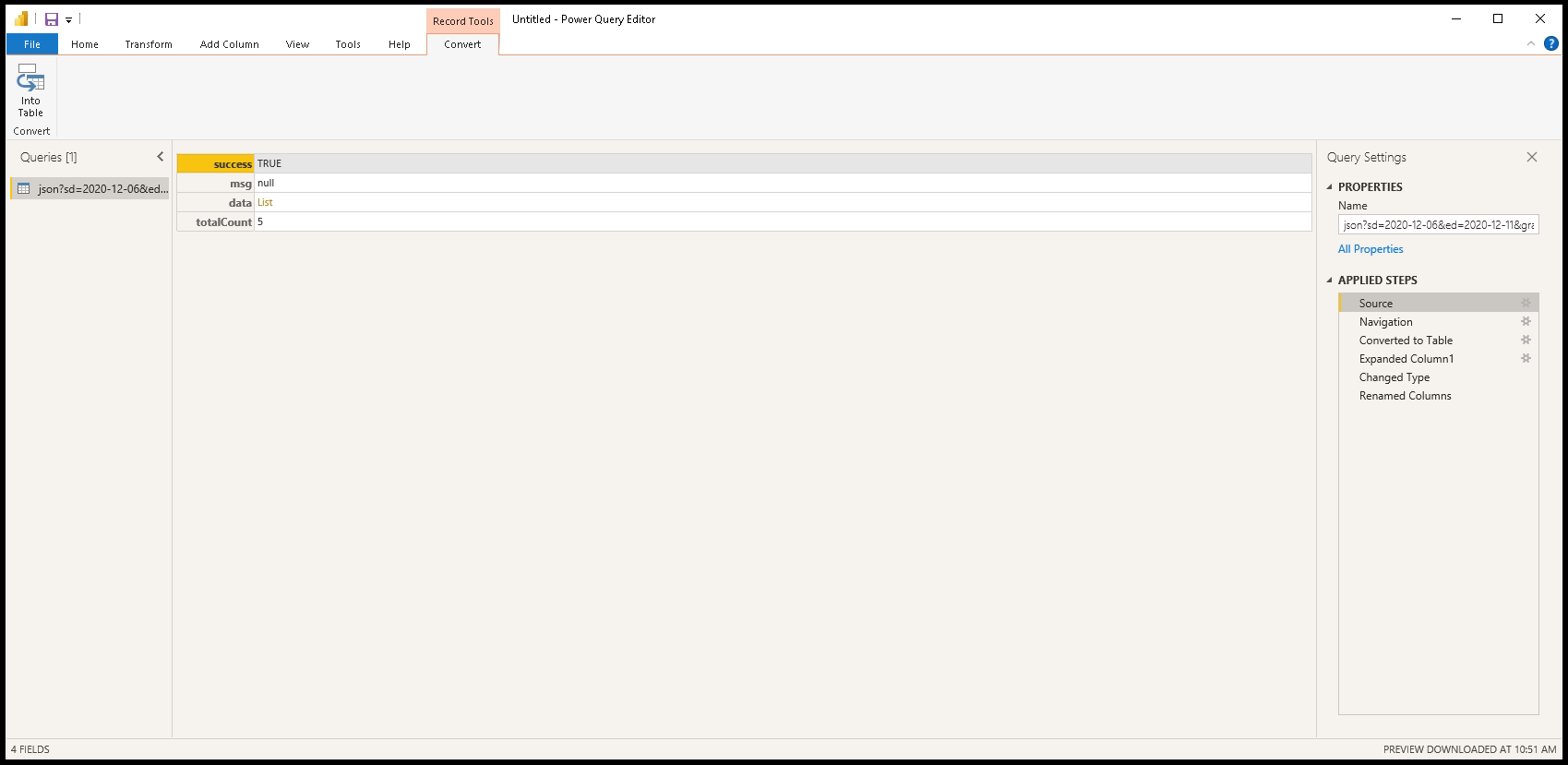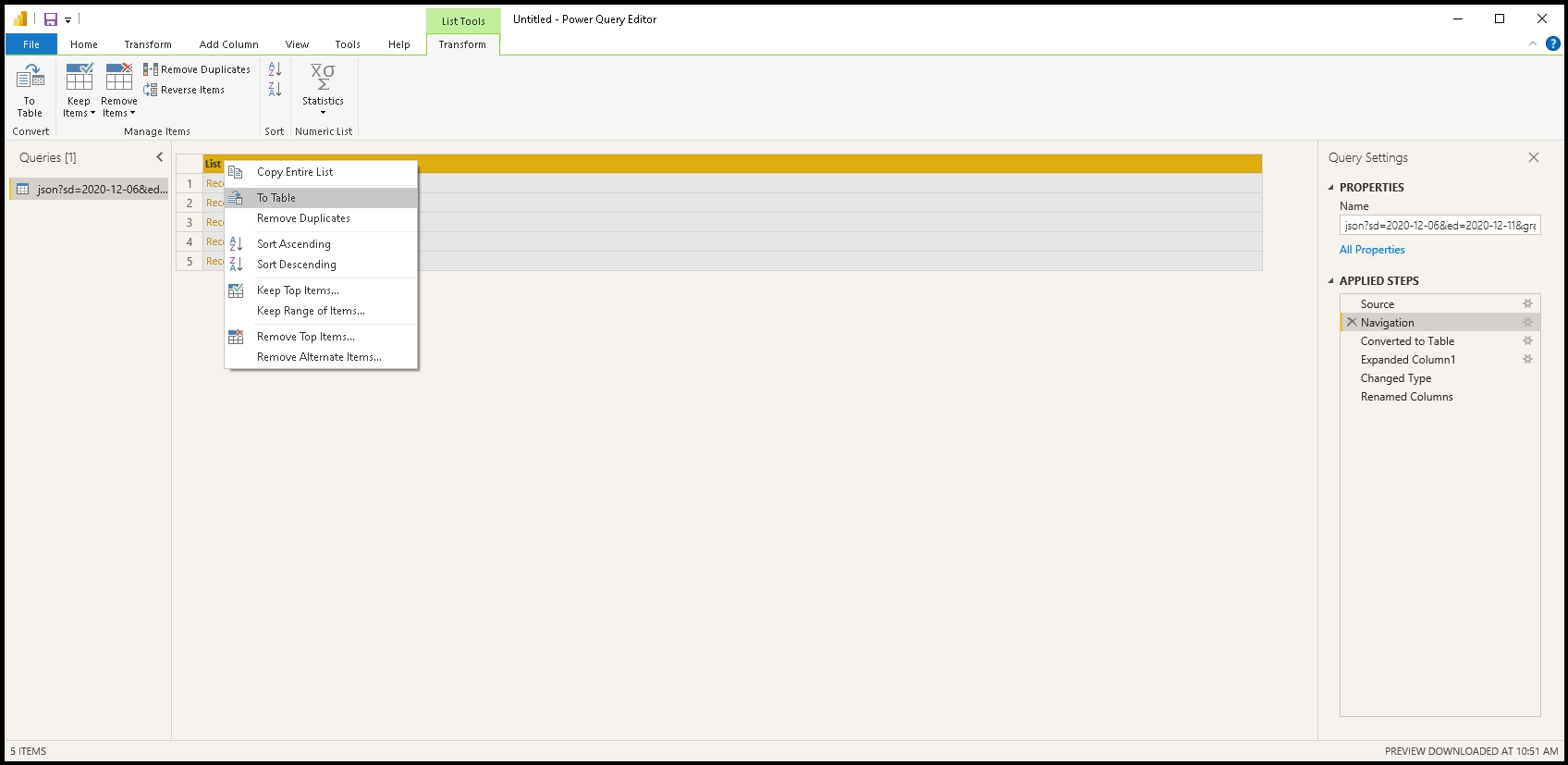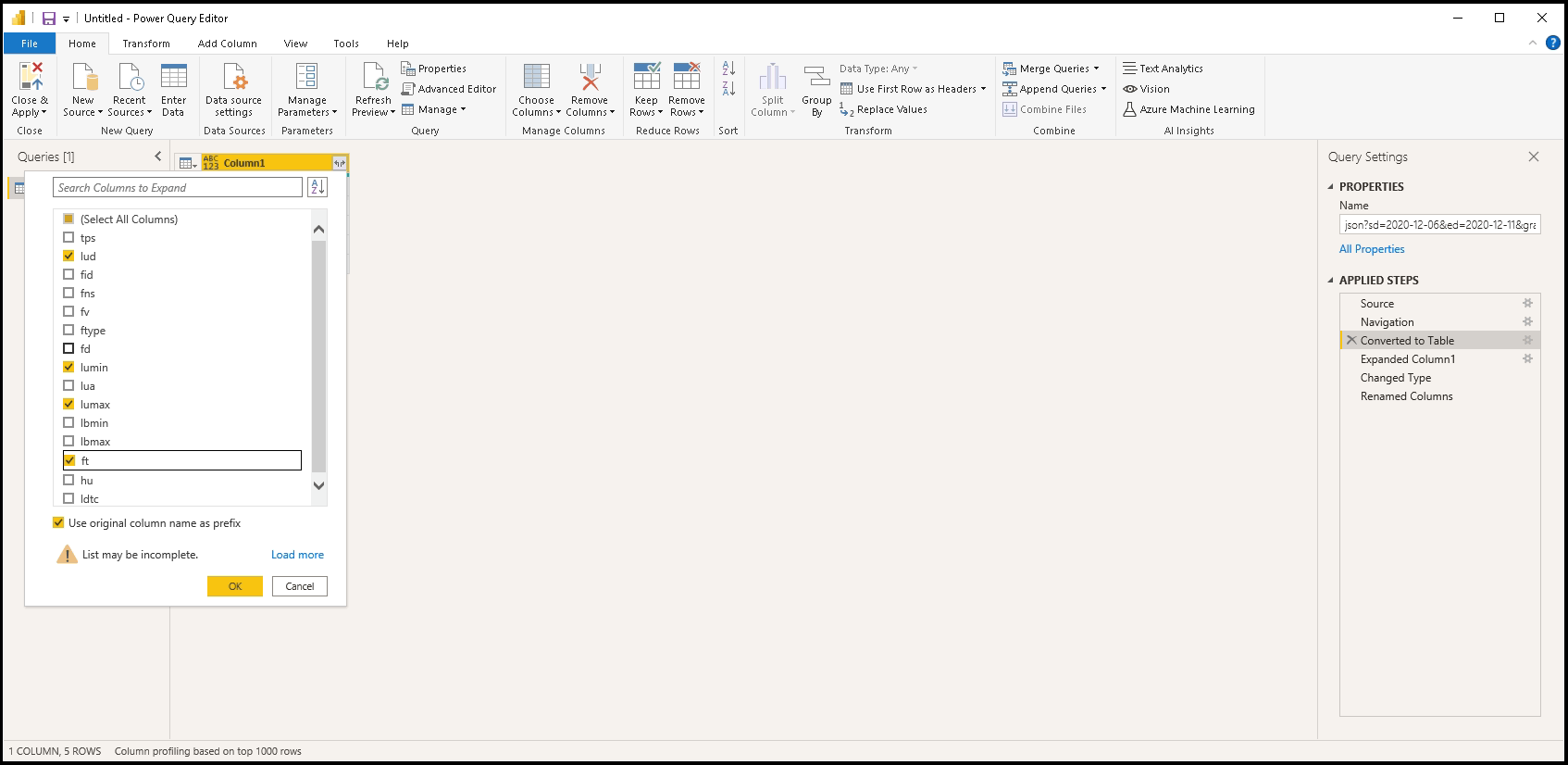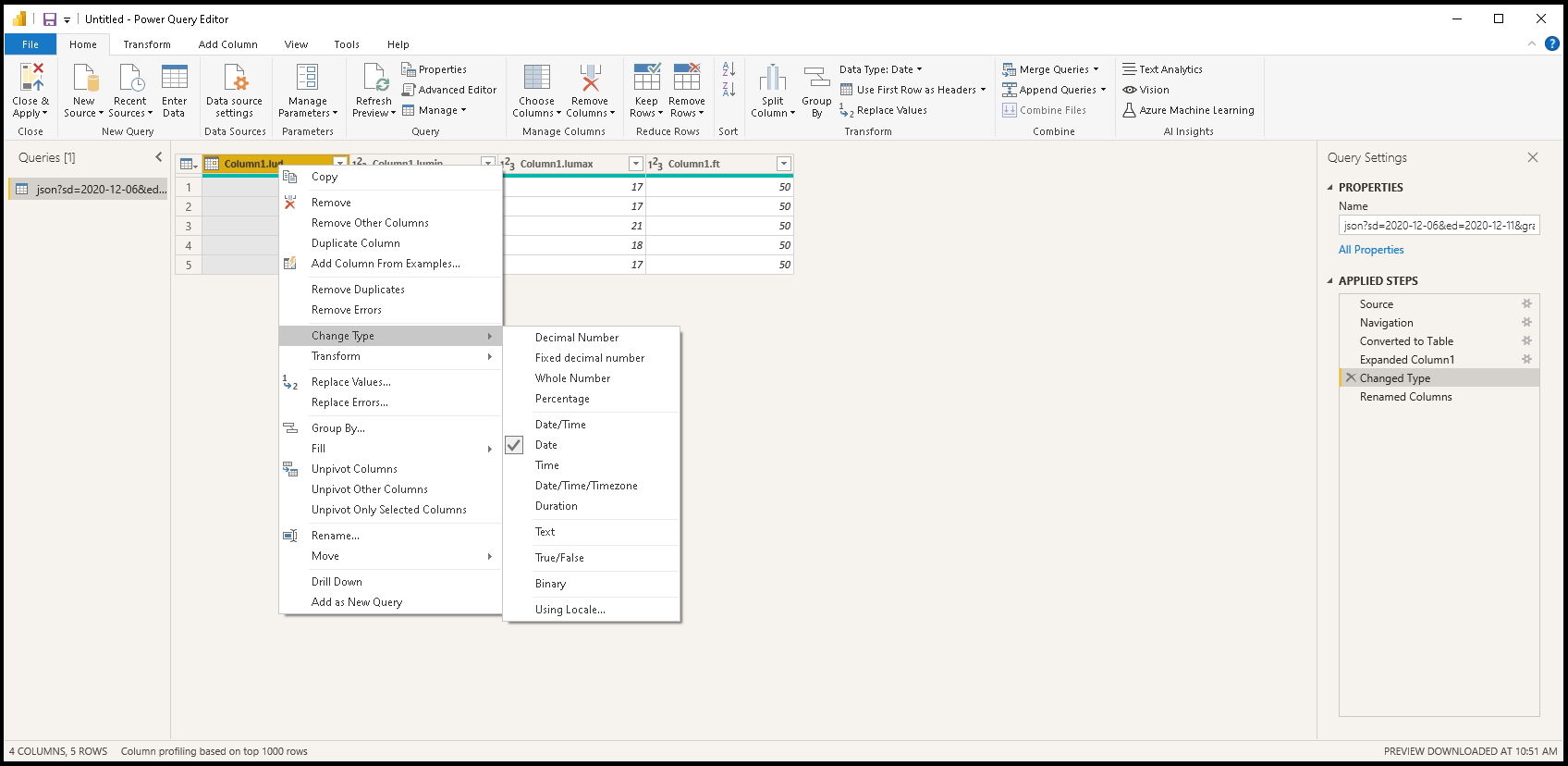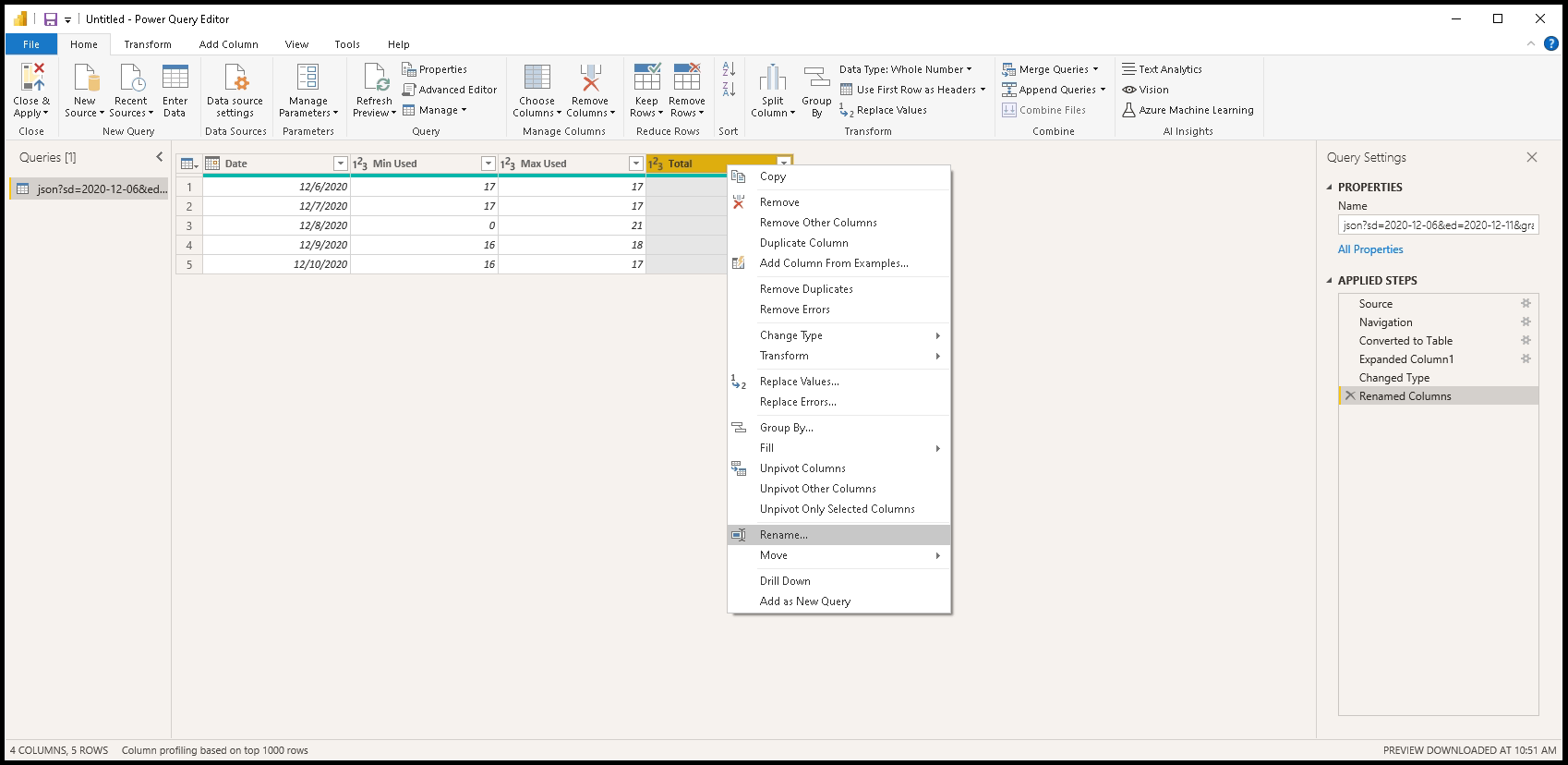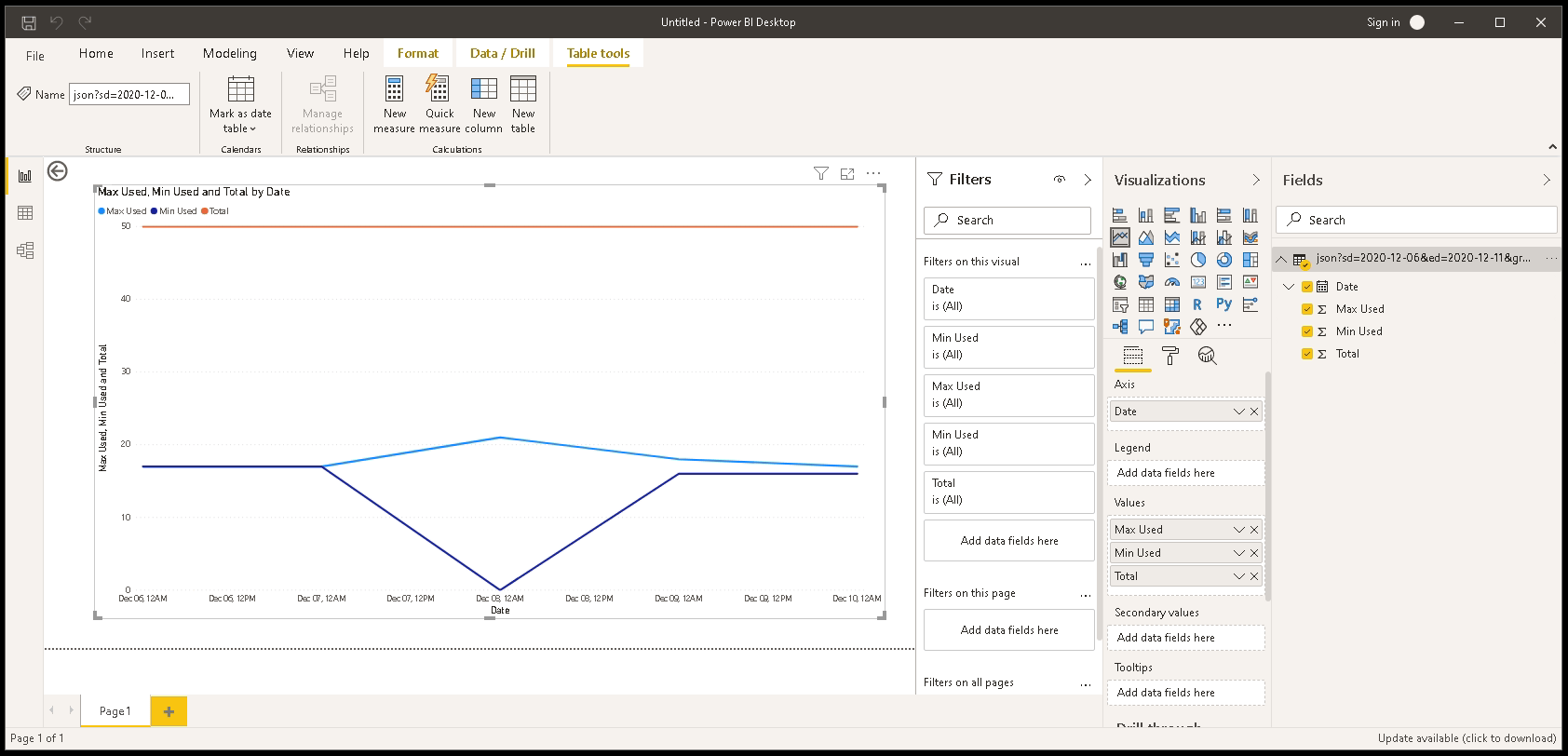Microsoft Power BI is a business analytics platform that provides interactive data visualizations for business intelligence (BI). You can use Microsoft Power BI to build customized reports or combine the data it provides with data from other tools to build a unified dashboard.
You can use the License Statistics API as input to Power BI; for example, to create a custom report. The steps to use the License Statistics API with Power BI include:
- Create a token with API scope in License Statistics.
- Add a Web data source to Power BI.
- Prepare the License Statistics API data for use with Power BI.
- Use the prepared License Statistics data to create a Power BI report.
These steps are detailed below.
Create a token with API scope
In order to make API requests, you must use a token, as described in detail in Making an API request.
- Go to API under your logged in username, shown in the upper right corner of the application window.
- Click Add to create a new API token.
From the dialog that opens, choose API as the scope type for the token.
- Optionally, add a description to identify the token.
- Click Save to create the token.
After you save your new API token, you'll see it in the API Tokens grid.
Add a Web Data Source to Power BI
In the Power BI Desktop:
- Create a new report.
- From the "Get data" menu, select Web as the data source.
- Complete the form that displays.
- Toggle the form to Advanced.
- Add the API endpoints (URL parts) and click Add part to see the URL preview. The example above uses the endpoint "/api/v2/feature/ID/usage-history/json," where the ID variable (set to 60 in our example) can be retrieved by using the "/api/v2/feature/list" endpoint or from the Feature ID column in any License Statistics grid, as shown in the illustration below. (The Feature ID column is hidden by default, so you may need to toggle its visibility on.)
- Set the query parameters. For our example, we set a start date of December 6, 2022, and an end date of December 11, 2022, using the following parameters (see API endpoints for a complete list of API endpoint parameters):
- sd=2022-12-06
- ed=2022-12-11
- granularity=DAY
At the bottom of the form, add the appropriate HTTP request headers; for our example:
- Accept: */*
- X-Auth-token: {API token value}
- Click OK to accept the completed form.
- When prompted, use the Anonymous access option. Authorization has been handled by the token we added to the header in the previous step.
Click Connect to access the defined Web source and get the requested data, which appears as shown below.
Prepare the data
The data that Power BI receives from the License Statistics API must be formatted before you can read it.
- Click List to navigate to the data key details.
- Convert the list of records to a table using the "To Table" option.
- The results appear as shown below.
- The resulting Table of records can be expanded to include multiple columns. Select the fields you want to include in your report from the response. (Note: You can also set a list of returned columns using the fieldsVisibility request parameter.)
For our example, we selected the following fields:lud (date)
lumin (min used)
lumax (max used)
ft (total)
- Click OK after you've selected the desired fields. The table will be expanded to a multi-column view.
Note: See API endpoints for a full list of parameters along with descriptions. - For proper processing, define the type of data for each column. In our example, the lud property is a Date type, while the rest of the properties are Whole Numbers.
- Rename the columns so they will be understandable in the reports.
Create a report in Power BI using the License Statistics data
Once you have prepared the data source, you can use the data to create your custom report. For example, you could create a usage history report for a particular feature that includes maximum usage, minimum usage, and the total number of licenses used daily during a selected period of time.
For our example, we created a line chart with a date on the X Axis and, on the Y Axis, the values from the three data series: Max Used, Min Used, and Total.


